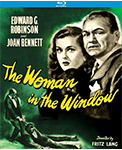THE WOMAN IN THE WINDOW
“The Woman in the Window” is a classic film noir from 1944 directed by Fritz Lang and starring Edward G. Robinson, Joan Bennett, and Dan Duryea. The film tells the story of Richard Wanley, a psychology professor who becomes entangled in a murder plot after falling for a mysterious woman.
PLOT
The film follows the story of Richard Wanley, a psychology professor who finds himself caught up in a murder plot after he becomes attracted to a mysterious woman.
The film begins with Wanley, played by Edward G. Robinson, and his colleagues discussing the nature of murder and the criminal mind. After the meeting, Wanley heads to his club, where he bumps into a beautiful young woman, Alice Reed, played by Joan Bennett. They strike up a conversation, and Alice reveals that she is an artist who is currently between jobs.
Wanley invites Alice back to his apartment for drinks, but their conversation is interrupted by a phone call from Wanley’s wife. As Alice is leaving, they have a brief moment of attraction, which is soon cut short by a man who appears in the hallway, accusing Alice of being his mistress.
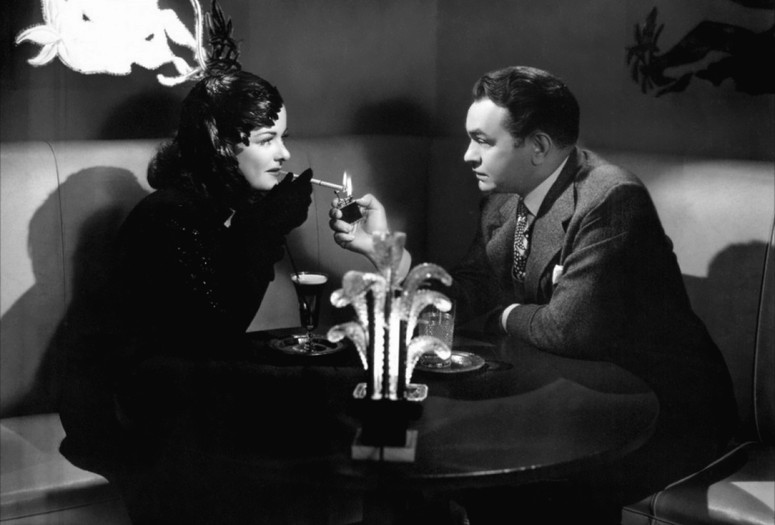
The man is violent, and Wanley is forced to intervene, resulting in the man’s accidental death. Fearing the consequences of their actions, Wanley and Alice decide to dispose of the body and cover up the crime.
As Wanley returns to his normal life, he finds himself increasingly haunted by guilt and fear. Meanwhile, a detective, played by James Mason, begins to investigate the disappearance of the man, and Wanley becomes increasingly paranoid about being caught.
In a tense finale, Wanley confronts Alice, who he discovers is not who she seemed. She reveals that she is not an artist but instead works for a notorious gangster who has been using her to manipulate Wanley. The detective arrives, and in a shootout, Alice is killed, and Wanley is arrested.
In a final twist, it is revealed that the entire story was a dream, as Wanley wakes up in his chair, realizing that he had fallen asleep reading a book. The film ends with Wanley staring out the window, haunted by the events of his dream.
THEMES
The film delves into several recurring themes that pervade the film noir genre, including the nature of desire, guilt, power dynamics, and the dangers of succumbing to temptation.
Desire is a prominent theme in the film, particularly the danger inherent in pursuing romantic or sexual desires. Edward G. Robinson’s character, Richard Wanley, is a happily married psychology professor who succumbs to temptation and begins an affair with Joan Bennett’s character, Alice Reed. Wanley becomes increasingly entranced by Alice’s seductive charms, leading him to make increasingly reckless decisions that ultimately lead to tragedy. The film suggests that desire can be a powerful, all-consuming force that can lead individuals to make irrational choices that can have devastating consequences.
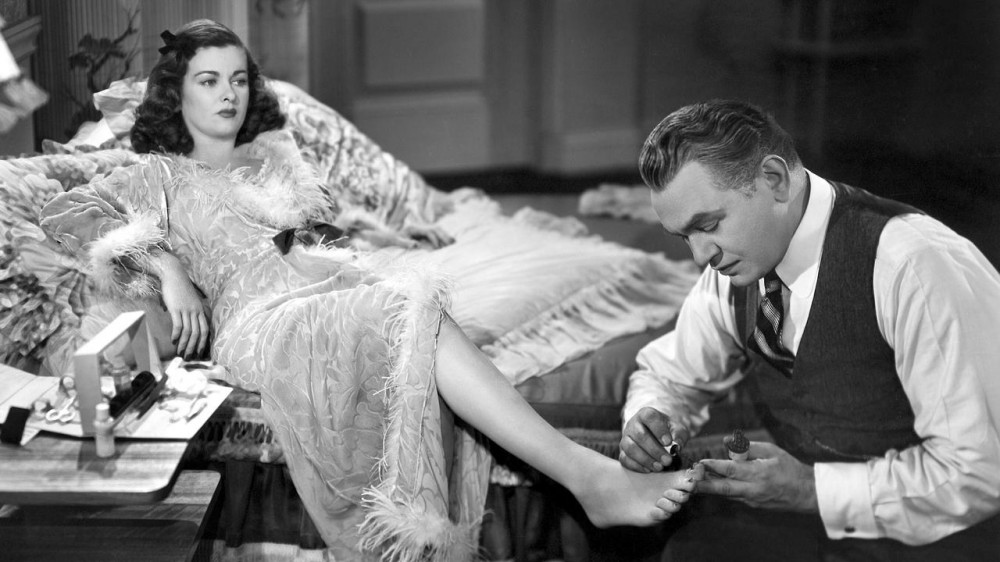
Guilt is another significant theme in the film, as Wanley grapples with the guilt and fear of having committed murder. After accidentally killing a man who intervenes during a fight between Wanley and Alice, Wanley becomes consumed with guilt and paranoia. His guilty conscience drives the plot, as he becomes increasingly desperate to avoid being caught by the authorities. Throughout the film, Wanley is haunted by the consequences of his actions, demonstrating the lasting impact of guilt on an individual’s psyche.
The film also explores power dynamics, particularly the tension between social class and individual power. Wanley’s position as a respected professor gives him a certain level of privilege and status in society, but he finds himself powerless when confronted with the consequences of his actions. In contrast, Alice is depicted as a victim of the power dynamics that govern her life, as she is beholden to a gangster who manipulates her into manipulating Wanley. The film suggests that power dynamics can be complex and unpredictable, with individuals often finding themselves in situations where they have little control over their own lives.
Finally, the film explores the dangers of succumbing to temptation, particularly in relation to the pursuit of forbidden desires. Throughout the film, Wanley’s temptation for Alice leads him to make increasingly dangerous and reckless choices, culminating in a murder plot that has severe consequences for all involved. The film suggests that the temptation to pursue one’s desires can be overwhelming, leading individuals to make choices that have long-lasting and often irreversible consequences.
FRITZ LANG
“The Woman in the Window” is a masterpiece of the film noir genre and a defining work in Lang’s career. Lang was a German director who made a name for himself in the early days of cinema with silent films such as “Metropolis” and “M.” He later moved to Hollywood, where he continued to create influential and groundbreaking works.
“The Woman in the Window” is a classic example of Lang’s signature style, which often focused on the darker aspects of human nature and explored themes such as guilt, desire, and the consequences of temptation.
One of the defining features of “The Woman in the Window” is its exploration of the consequences of temptation. The film’s central characters are all driven by their desires, whether it be Wanley’s attraction to Reed or Reed’s own desire for material wealth and power. Lang uses the characters’ motivations to create a tense and suspenseful atmosphere, as the audience is left wondering whether the characters will be able to resist temptation or whether they will ultimately succumb to their darker impulses.
Another key theme in “The Woman in the Window” is guilt, which is closely tied to the film’s exploration of temptation. As the characters become more deeply enmeshed in the dangerous world of their own making, they are forced to confront the weight of their actions and the consequences of their decisions. Lang expertly ratchets up the tension as the characters struggle with their guilt, culminating in a stunning and unforgettable twist ending that continues to captivate audiences today.
Fritz Lang’s direction in “The Woman in the Window” is masterful, using visual cues and subtle symbolism to convey the film’s themes and create a rich and immersive world. The use of shadow and light, for example, is a hallmark of Lang’s work, and in “The Woman in the Window” he expertly employs these techniques to create a haunting and suspenseful atmosphere. The film’s stark and moody cinematography, combined with Lang’s skillful direction, create a world that is both seductive and dangerous.
POPULAR CULTURE
One notable example of “The Woman in the Window” influencing popular culture is the 1981 film “Body Heat,” which is often considered a modern retelling of the classic film noir. Like “The Woman in the Window,” “Body Heat” explores themes of desire and guilt, with the central character becoming entangled in a web of deceit and murder after falling for a seductive femme fatale. The film’s plot and themes bear striking similarities to “The Woman in the Window,” demonstrating the lasting impact of the film on popular culture.
In addition to inspiring other films, “The Woman in the Window” has also been referenced and parodied in various forms of media. The 1960s television show “The Twilight Zone” features an episode titled “The Eye of the Beholder,” which references the famous twist ending of “The Woman in the Window.” The 2002 film “Adaptation” also references the film, with one character expressing admiration for the film’s director, Fritz Lang.
Other examples include:
“Basic Instinct” (1992) shares many similarities with “The Woman in the Window,” including its exploration of sexual desire, power dynamics, and the consequences of succumbing to temptation. The film features a seductive femme fatale who becomes entangled in a dangerous web of deceit and murder with the central character, a detective played by Michael Douglas.
“Mulholland Drive” (1996) contains several references to “The Woman in the Window,” including a poster of the film visible in one scene. Like “The Woman in the Window,” “Mulholland Drive” explores themes of desire, guilt, and the dangers of succumbing to temptation, with the central character becoming increasingly enmeshed in a mysterious and dangerous world.
“Dead Again” (1991) features a character who is an avid fan of “The Woman in the Window.” The character becomes embroiled in a complex murder mystery that shares many similarities with the plot of the classic film noir.
“Blade Runner 2049” (2017) features a character who has a small replica of the poster for “The Woman in the Window” in his office. This subtle reference pays homage to the influence of classic film noir on the sci-fi genre, which often explores similar themes of desire, power, and the consequences of human actions.
“Fatal Attraction” (1987) – This psychological thriller, directed by Adrian Lyne, features a similar plot to “The Woman in the Window” and explores similar themes of desire, guilt, and the dangers of temptation. The film follows a married man who has a brief affair with a woman who becomes increasingly unstable and begins to stalk him and his family.
“The Simpsons” (Season 6, Episode 14) – In this episode of the long-running animated series, titled “Bart’s Comet,” a brief clip of “The Woman in the Window” is shown during a montage of classic films. The clip features Edward G. Robinson’s character exclaiming, “Stop, you’re killing me!” during a tense moment in the film.
Explore more Film Noir

“Nightmare Alley” is a 1947 film noir about a con man’s rise and fall in the carnival world.
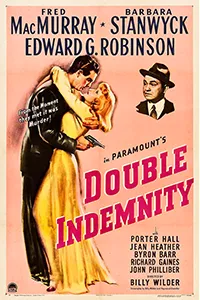
A gripping film noir about a seductive woman who convinces an insurance salesman to plot a murder.
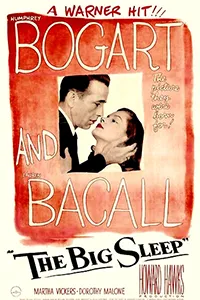
This classic film noir follows private detective Philip Marlowe as he investigates a complex case involving a wealthy family.
